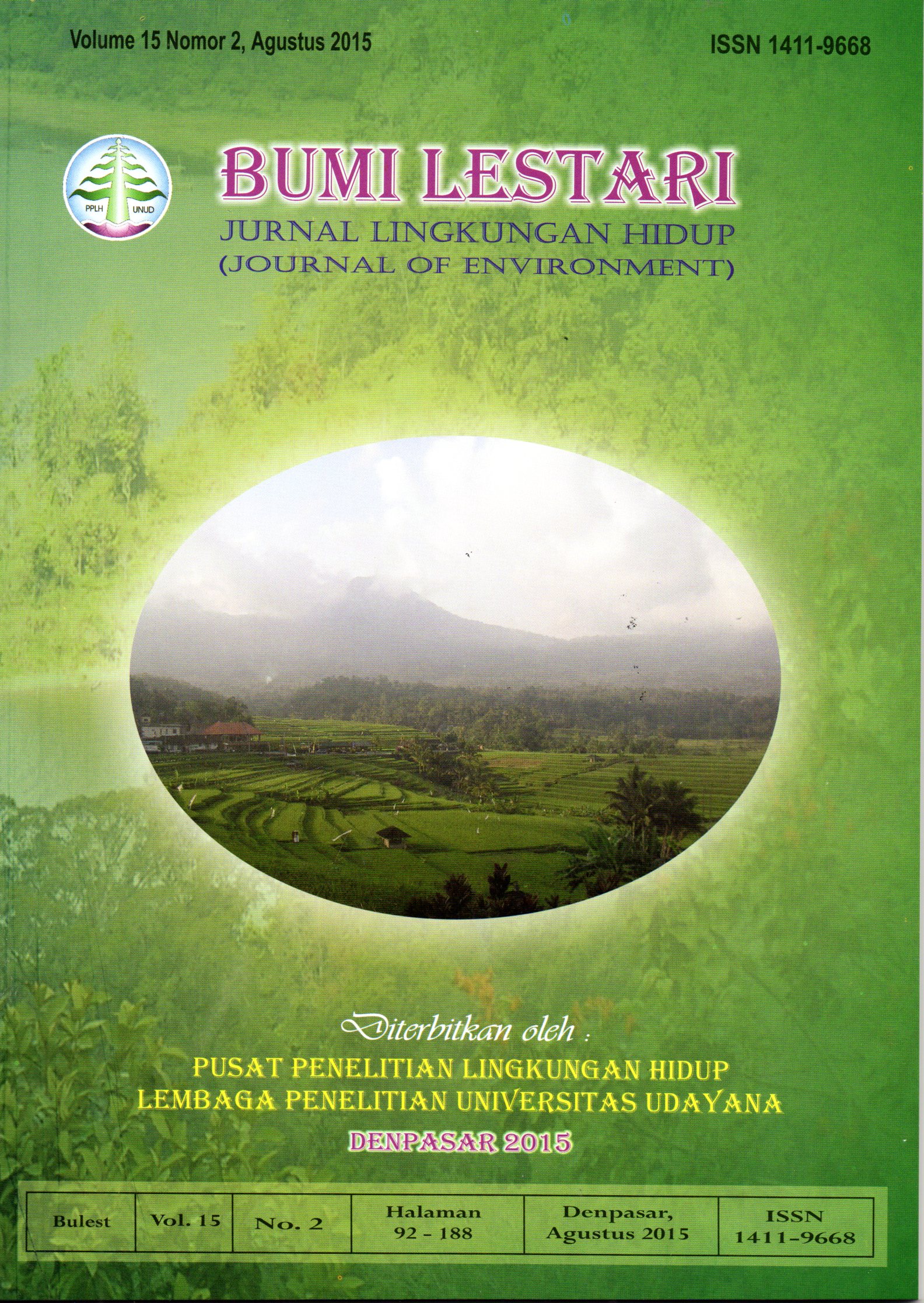EFEKTIFITAS BIOFILTER DENGAN MEDIA KONTAK BATU VULKANIK UNTUK MENGOLAH EFLUEN AIR LIMBAH DOMESTIK 1 PADA TANGKI SEPTIK KONVENSIONAL
Abstract
Biofilter septic tank is one of the domestic wastewater treatment technology uses contactmedia in processing wastewater. Contact media that can be used made from plastic or localmaterial such as volcanic scoria. This research is an applied research in order to test theefectiveness of volcanic scoria as contact media. Location of this research is Badung Regency,Bali. Research conducted by built biofilter wastewater treatment unit at research locationthat have been selected by doing first step that is designing biofilter septic tank in accordancewith the location and teoritically. Wastewater from conventional septic tank at researchlocation flowed into biofilter tank and left in the certain time to grow the biofil which willprocess the wastewater. In certain time, wastewater quality was tested and counted thedecrease percentage of wastewater concentration content. The research result showed thatthe biofilter septic tank is not effective to treat wastewater effluent from conventional septictank because it can only reduce the concentration of wastewater content about 48,74%.The parameters that not comply the wastewater standard such as free ammonia, BOD5, andCOD were reduced each about 82.15%, 45.61%, and 46.04%.Downloads
Keywords
Authors who publish with this journal agree to the following terms:
- All articles published by Bumi Lestari Journal of Environment and Environmental Reseach Center Udayana University are made available under an open access license worldwide immediately. This means everyone has free and unlimited access to the full-text of all articles published in Bumi Lestari Journal of Environment, and everyone is free to re-use the published material given proper accreditation/citation of the original publication. Open access publication is supported by authors' institutes or research funding agency by payment of a comparatively article processing charge for accepted articles (See Author Fees). Bumi Lestari Journal of Environment and Environmental Reseach Center Udayana University publish articles under the Creative Commons Attribution License.
- Authors are able to enter into separate, additional contractual arrangements for the non-exclusive distribution of the journal's published version of the work (e.g., post it to an institutional repository or publish it in a book), with an acknowledgement of its initial publication in this journal.
- Authors are permitted and encouraged to post their work online (e.g., in institutional repositories or on their website) prior to and during the submission process, as it can lead to productive exchanges, as well as earlier and greater citation of published work (See The Effect of Open Access).





